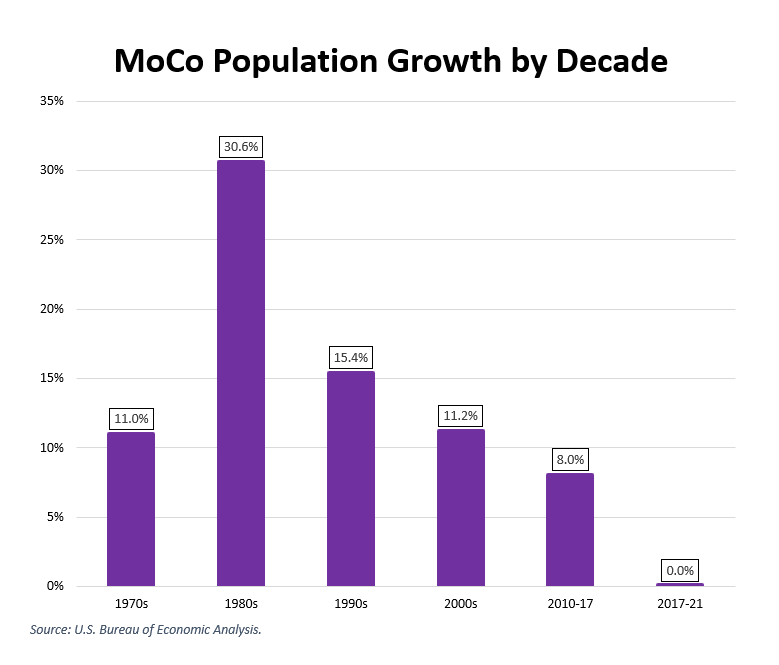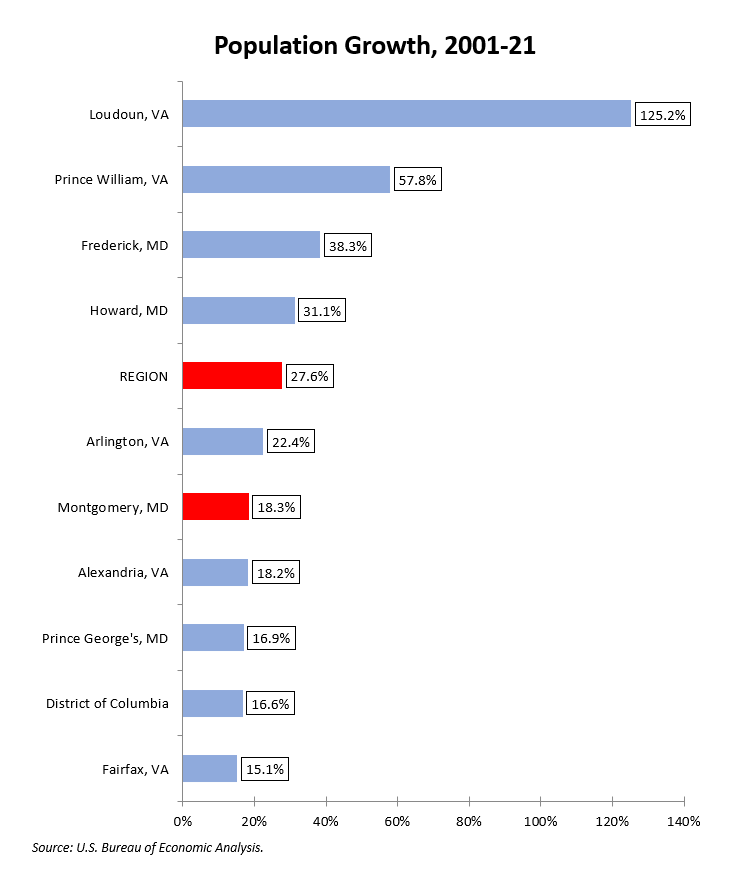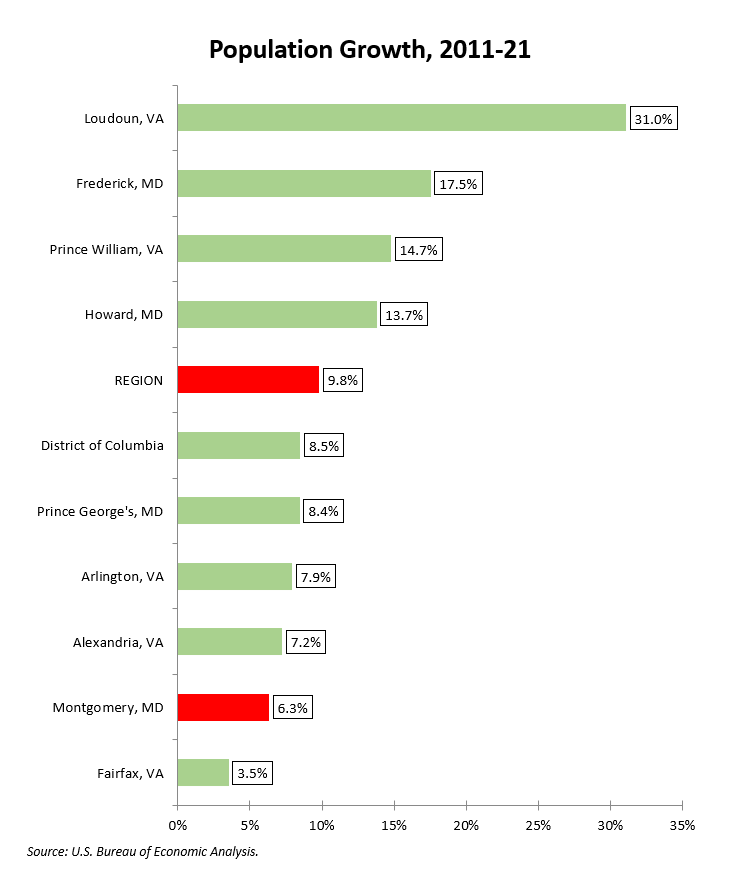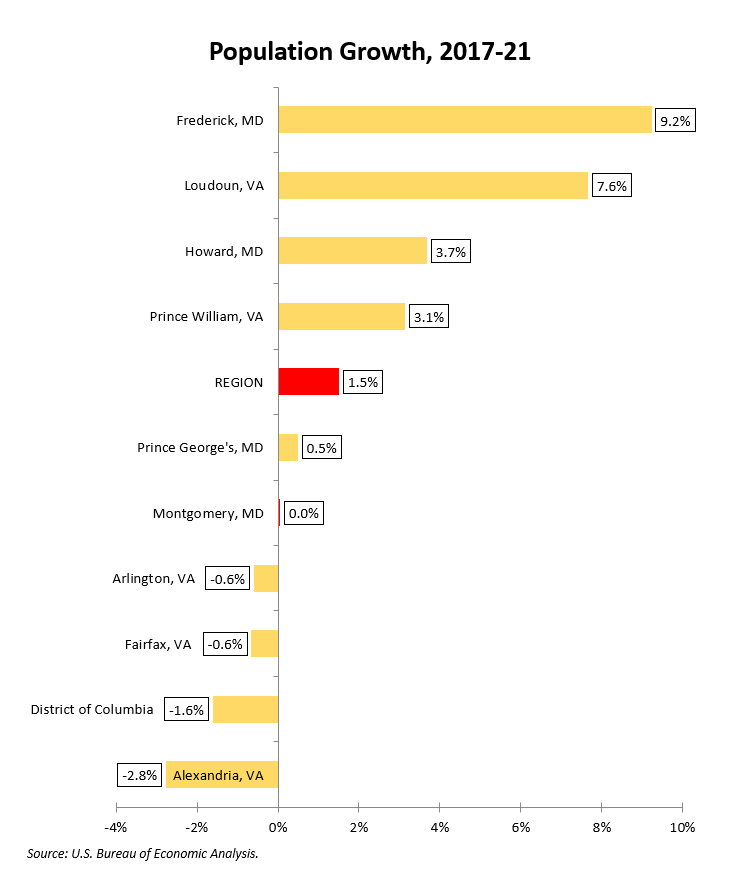By Adam Pagnucco.
In each post in this series, we are going to examine one key stat on Montgomery County’s economy. Let’s start with one of the measures that affects nearly all other measures: population growth.
The seminal history of Montgomery County is Suburb, by former planning board chairman Royce Hanson. (If you don’t have it, go buy it right now!) Hanson charts how the county’s politics were driven by the debate on how to deal with population growth for many decades. Year after year, the pendulum swung back and forth between developers and their allies and those who worried about how to deal with hundreds of thousands of new residents. That debate has begun to subside in recent years, but it still pops up from time to time.
From an economic perspective, population growth is preferable to population decline. Yes, growth has challenges. New people need new schools, transportation investment and more government services. But if taxes are adequate, those things can be afforded and those new people can contribute much cultural and economic dynamism. Population decline equals economic decline and governments who struggle to pay their bills. Think Detroit, St. Louis and Baltimore.
The chart below shows Montgomery County’s population from 1969 through 2021 according to the U.S. Bureau of Economic Analysis. Overall, it’s a story of substantial growth. But look at how it tails off in the last few years.

The chart below shows our rate of population growth by decade. After a 1980s BOOM, the rate of growth has fallen steadily. Between 2017 and 2021, there was virtually no population growth. And 2021 saw the first population drop since 1979. According to the Census Bureau, MoCo’s population fell again in 2022.

Now let’s compare us to the other big players in the region. The chart below shows population growth over the last 20 years. We were not one of the leaders but we did not do badly. Our population grew at a similar rate to Arlington, Alexandria, Prince George’s and D.C.

Now let’s look at the last ten years. Of the region’s big players, only Fairfax had a lower population growth rate than we did.

Finally, let’s look at 2017-21, a period of almost no growth here. This time, we are not the only ones. Arlington, Fairfax, D.C. and Alexandria had population declines. These places are not commonly regarded as having weak economies, but this is what it is. My recent post on Census data contains updated information on 2020, 2021 and 2022.

The bottom line here is that a slowdown in population growth – and perhaps even a decline – will affect us as well as many of our trading partners in the region. Yes, that’s right – D.C. and Virginia may be our competitors, but we also benefit from spillover effects when they are economically healthy. If this turns out to be a new normal, it will cause headwinds to our county budget and constrain economic opportunities for our residents and businesses.
We will look at gross domestic product next.
